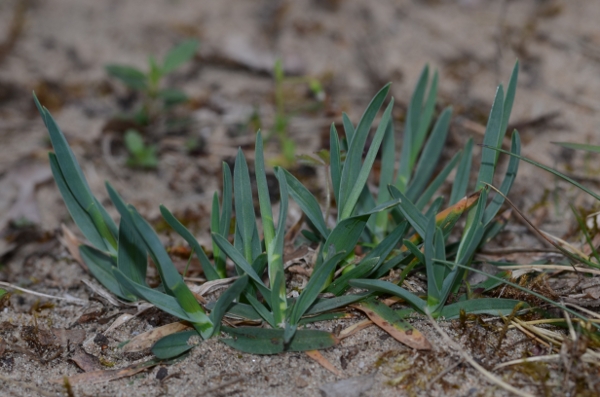Excursions
Besides a guided tour to the dry grassland replica in the Botanic Garden (the steppe replica has been among others created with seed material collected on the EDGG expeditions to Ukraine 2010 and Siberia 2013), we intend three excursions, two of them a whole day and one half a day long. The latter will lead into the Mainz Sand area at the city margin of Mainz. The area is part of a larger aeolian sand area reaching from Mainz to Ingelheim about 15 kilometres west. It was formed in the Pleistocene, when sand had been blown out from the Rhine River valley and accumulated. Today most parts of the sand area are under intensive land use by production of wine, fruits (mainly stone fruits) and even asparagus. Part of the protected area was already established in 1939 as the Mainz Sand reserve. In the 1970s, at the margin of the area, a number of high-rise buildings were built and in addition the highway to Wiesbaden was constructed. Therefore it is surprising that the area is still full of endangered species, both plants and animals. In the Mainz Sand area, the westernmost dry continental sand grasslands belonging to the Koelerion glaucae and Festucion valesiacae can be found. In a natural pine forest, semi-dry grasslands of the Cirsio-Brachypodion type has developed, and on disturbed open sites there is annual vegetation of the Sileno conicae-Cerastion semidecandri . This area is the only known location of Onosma arenaria in Germany and is an example of relict vegetation that had survived in this isolated area since the late Pleistocene. During our excursion through the area we will focus on plants and animals (mainly insects) and on vegetation. Furthermore we will discuss the challenges and opportunities for conservation.

During the one-day excursion to Rhine-Hesse, we will visit dry grasslands on volcanic soil between Frei-Laubersheim and Siefersheim, west of Mainz. This excursion area comprises the transition zone of the Mainz Basin and the North-Palatinate Mountains. Topographically it is a hilly plain with embedded low mountains. Dry grasslands occur on steeper slopes and plateaus, while gentle slopes and plains were under intensive land-use (mostly vineyards). Hills and rocks bearing dry grasslands were formed by magmatic rhyolite, while at two separate sites, dry grasslands on magmatic andesite and basaltic melamphyre have developed. Dry grasslands on loess soil bearing Festucion valesiacae steppe-like grasslands occur at several places within a confined area. The area is the locus classicus and a core area of Koelerio-Phleion communities. Other dry grassland and heathland communities in the area belong to the, Sedo-Veronicion dillenii, Alysso-Sedion, and Genistion pilosae alliances. The area is also well known for its white wine taverns, so-called Straußenwirtschaften, which we intend to “explore” during the excursion in this area.


Finally, an excursion is planned to the Middle Rhine Valley, to the north-west of Mainz. This area harbours rock slopes with extensive xerothermic vegetation complexes containing rocky grasslands (Koelerio-Phleion, Sedo-Veronicion dillenii) and xerophilic Acer monspessulanum forests (Quercion pubescentis). It is designated a World Heritage Site by Unesco and is one of the classic touristic attractions of Germany. Moreover, this valley is a culturally important place for German ancient history. It was here that the Nibelungen Saga took place, in which a German king became invincible by bathing in the blood of a dragon, and finally the gold of the kingdom was sunk in the Rhine River and became the legendary Rhine Gold Treasure. Another saga tells that a fair-haired mermaid named Loreley sat on the rocks and allured skippers, distracting them from the dangerous currents, so that they finally sank with their ships in the river.

